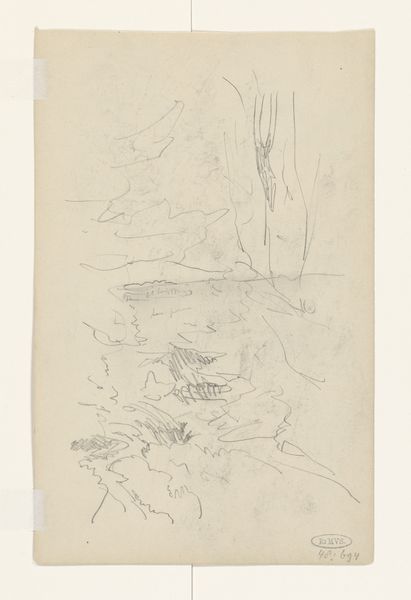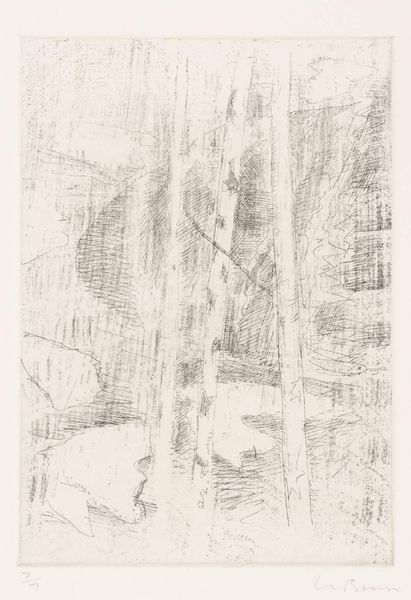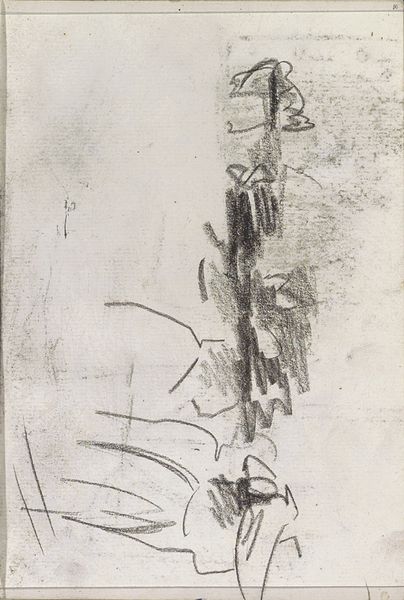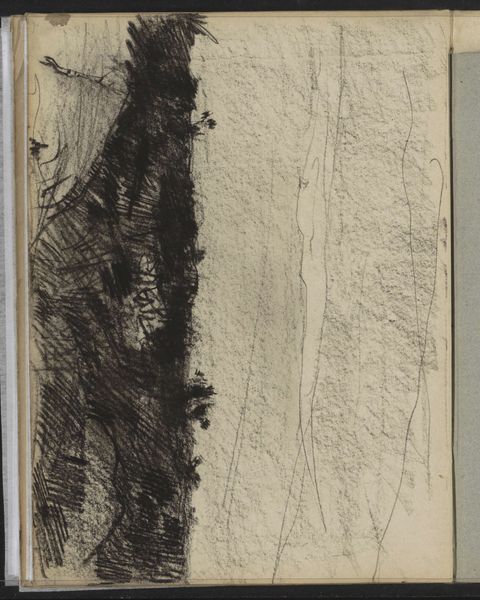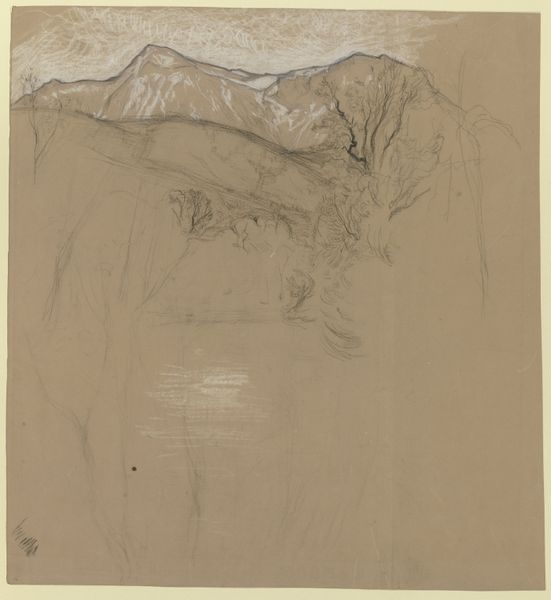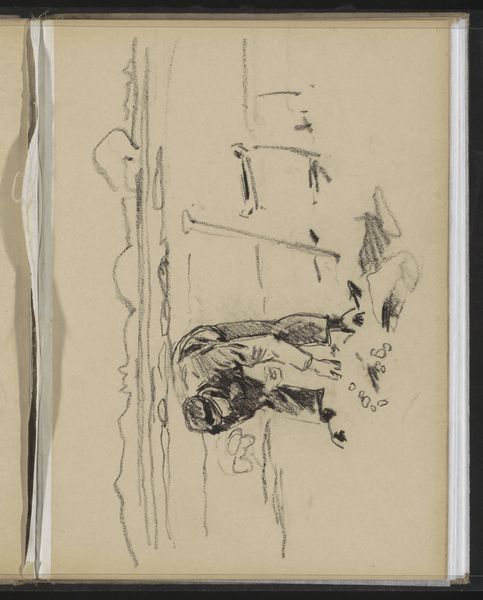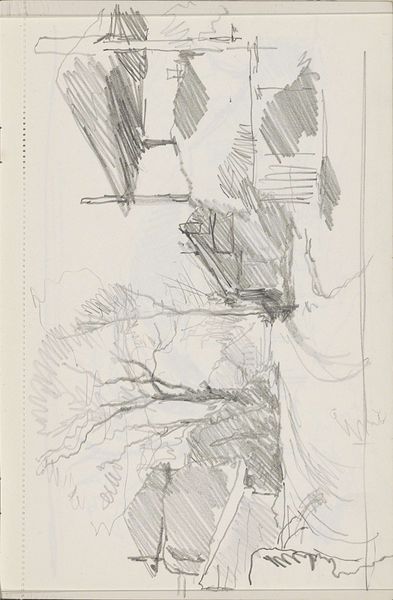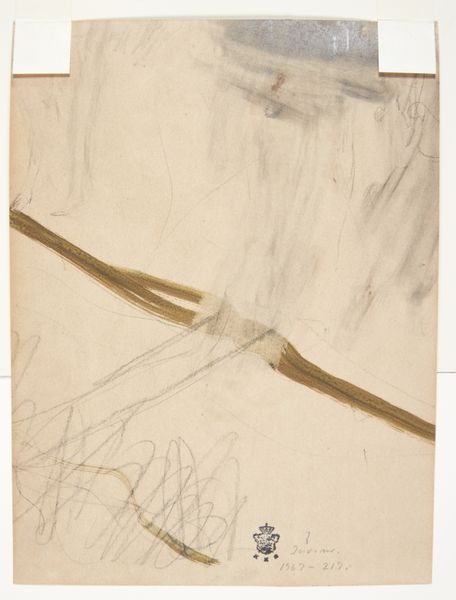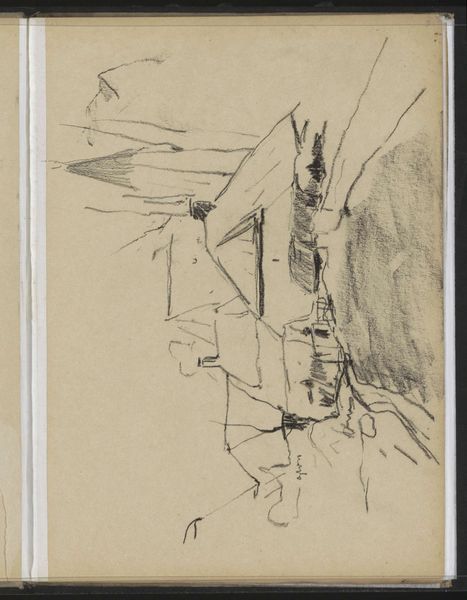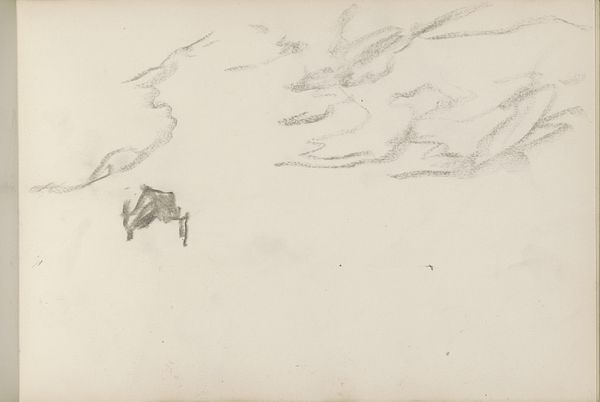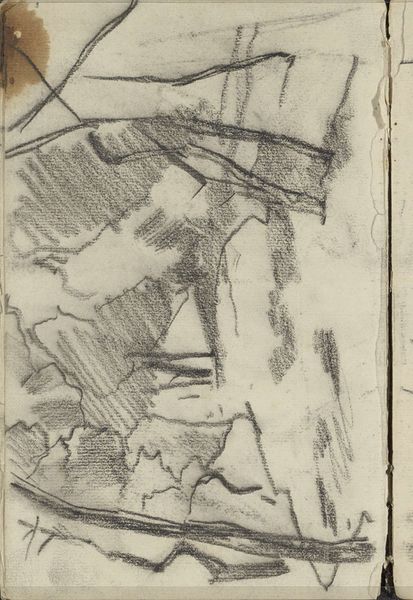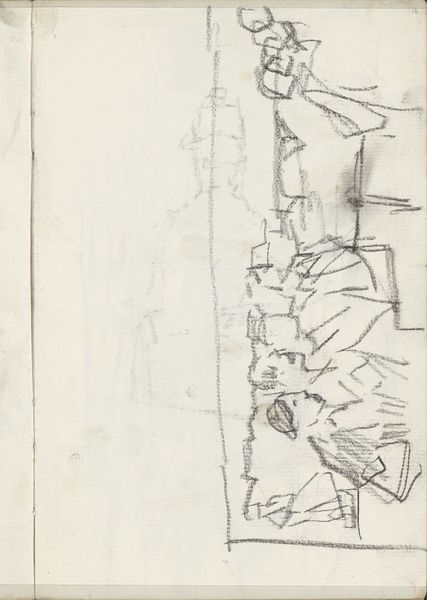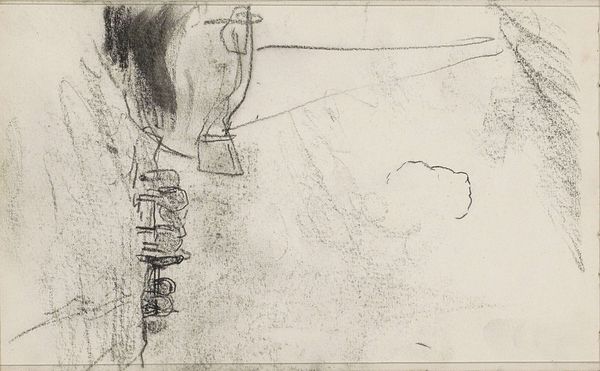
drawing, pencil
#
portrait
#
drawing
#
pencil sketch
#
figuration
#
pencil
Dimensions: height 24.0 cm, width 32.0 cm
Copyright: Rijks Museum: Open Domain
Curator: So, here we have Cor van Teeseling's pencil drawing, "Zelfportret, aanvallende soldaten: B-1-1, maart 1942," created between 1942 and 1943. It’s currently housed at the Rijksmuseum. Editor: My initial thought? It’s ghostly. Like fragmented memories clinging to the page, trying to coalesce. The pencil strokes are so tentative, as if he were afraid to press too hard and shatter the image. Curator: The self-portrait, combined with the depiction of attacking soldiers, powerfully reflects the artist's experiences during wartime, specifically referencing the political and social upheavals caused by war, while pointing toward larger intersectional ideas about power, safety and violence. How does that reading impact you? Editor: Knowing it's a self-portrait changes everything, doesn't it? The figures now feel internalized – personal demons maybe, or echoes of the world closing in. He’s both subject and witness. It almost feels like a raw, unfiltered dreamscape—that kind where the familiar and terrifying collide. I mean, it's quite eerie. Curator: Precisely. The “attacking soldiers” are not depicted as a traditional battle scene. Instead, they feel like oppressive forces bearing down on the artist’s identity. War’s not happening “over there;” it’s an intimate act, internalized, imprinted on the artist’s body and psyche. The incompleteness of the drawing echoes that uncertainty of that moment, the potential, but also peril, for future directions. Editor: Right! There’s a lack of solid form—all sketched gestures and floating shapes, which gives this impression that nothing's set, everything's fluid and in peril, if you want. It’s not just about what's depicted; it's about that feeling of something not being fully anchored. I like that kind of ephemeral quality in art. Curator: That is why this drawing functions as such a compelling historical and political document, especially when viewed through an intersectional lens considering the impacts of conflict on identity and individual expression. Editor: Yeah, like the anxiety of the present bleeding into the representation. Knowing what we now know about this time…it adds so many layers to it. So what's your takeaway as we look at it here in 2024? Curator: I think it's a reminder that war, ultimately, isn't an abstract idea, a far-off statistic, it’s lived, it’s felt, and it permanently marks both our physical and psychological landscape. Editor: Totally, like a fragile message across time about the importance of, well, really seeing each other and not repeating mistakes. It's a powerful, quiet little thing, this drawing.
Comments
No comments
Be the first to comment and join the conversation on the ultimate creative platform.
